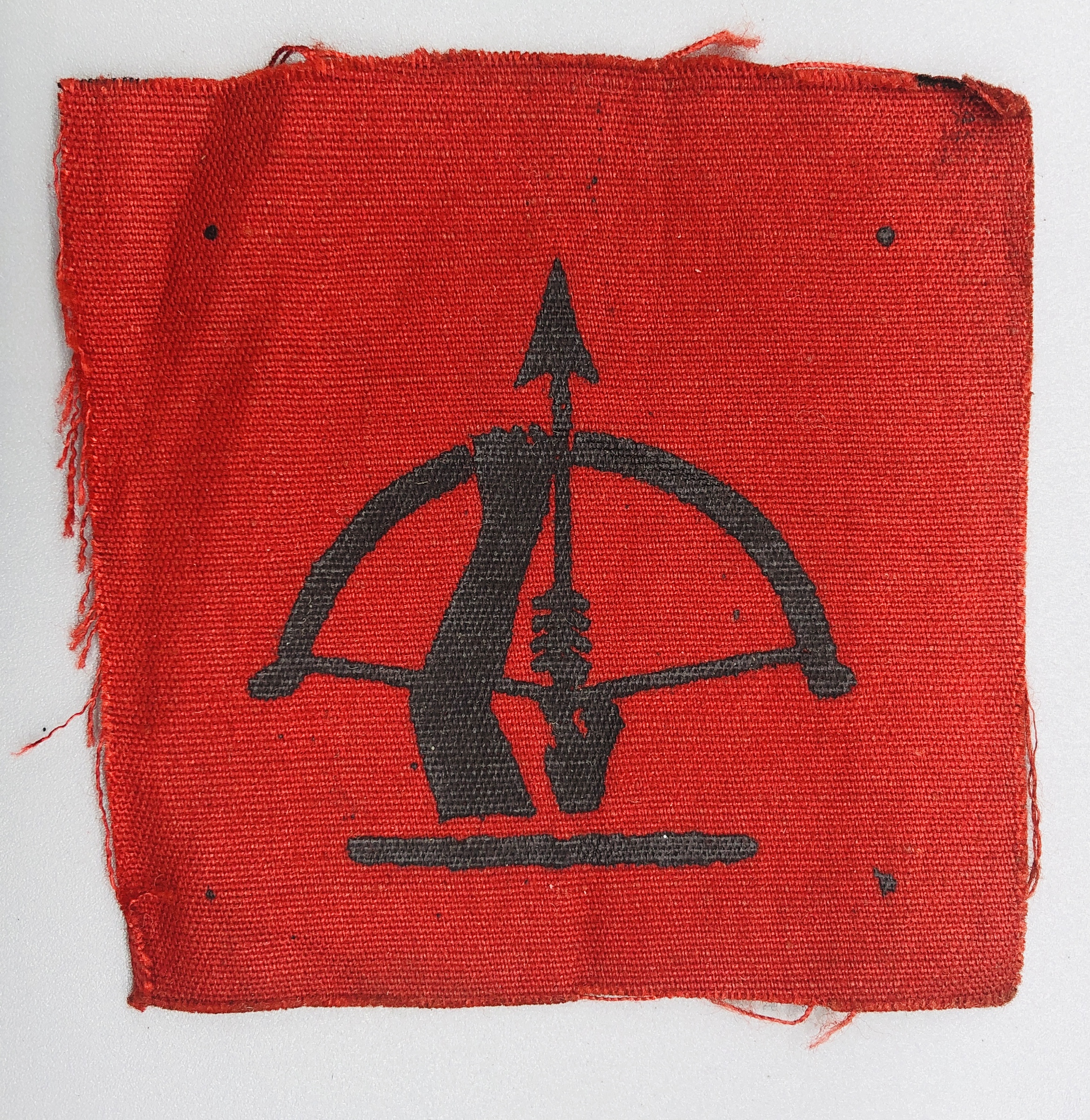Description
Anti Aircraft Command Formation Badge
This is the second pattern badge, the first being a simple bow. This second pattern badge was adopted after October 1942 when the AA Corps and Divisional structure was abolished. The two patterns of badge appear to have existed side by side for the remainder of the war and into the post-war period. The sign was symbolic of defence against air attack. Its choice was influenced by the fact that a similar sign appeared on the facade of ‘Glenthorn’, the house at Stanmore chosen as Anti-Aircraft Command’s HQ. The house was in turn chosen because it lay with a few hundred yards from, and in the grounds of, Bentley Priory, HQ of Fighter Command. The sign was taken from the crest of the Gordon family who built Glenthorn in the previous century.
The sign was also similar to the naked kneeling archer that was the badge of the first School of AA Defence at Biggin Hill. Initially the sign was worn only by AA Command staff. When the AA Corps and Divisions were disbanded in October 1942 the new AA Groups did not take up distinctive signs of their own and all AA Groups and units wore the AA Command sign. The transition was complete by the end of December 1942. There are many variations of the badge, with different patterns of hands and variations on how the torse was depicted. There are also versions where the arm is on the right, which has led to suggestions that in some cases the badge could have been worn as facing pairs. However, as this appears to be heraldically incorrect, this and the other variations are more generally considered to be merely manufacturers’ errors or variations. In the period between the two World Wars anti-aircraft (AA) defence was the responsibility of the RAF, specifically Fighter Command through the agency of the Air Defence of Great Britain (ADGB) organization, created in 1925. 1st AA Division was created in December 1935 to guard London and the Home Counties, 2nd AA Division being formed in December 1936 to guard the Midlands. In June 1938 1st AA Corps was created to command five AA Divisions, at this stage largely paper formations. Anti-Aircraft Command was formed in January 1939 and in April of that year two further AA Corps and seven AA Divisions, with 24 AA Brigades, were created, all of which were to be established by September 1939.
In November 1940 the AA Corps took over operational command of the AA Divisions from AA Command. In October 1942 all three AA Corps and all twelve AA Divisions were disbanded, the constituent units being reorganized under seven AA Groups.



